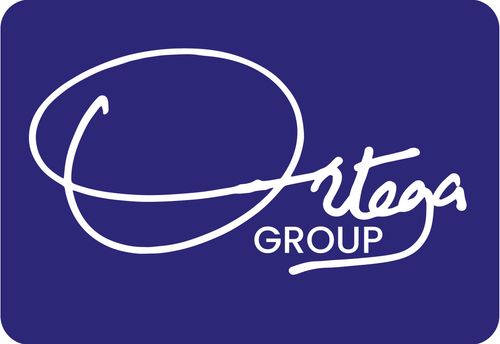By Moses Kaketo
In February 2018, Coca-Cola Beverages Uganda (CCBU) announced an expansion of their product line with the launch of #FuzeTea, a unique blend of tea extract and fruit flavors that ensures a delightful fusion of tea, fruit, herbs, and other natural ingredients.
Fuze Tea came in two flavors: peach and apple and lemongrass, meant to appeal to busy consumers looking for a refreshing and delicious drink while they entertain, socialize, or work.
Speaking at the product launch back then, #CocaColaBeveragesUganda Brand Manager, Miriam Limo, said: “Consumers’ tastes have evolved, and so have Coca-Cola’s offerings. The launch of Fuze Tea “is a testament to the company’s innovation agenda.”
Fuze Tea was available in 400 ml bottles at a price of Ugx. 2,000. 10 months after the launch, market intelligence reports revealed that the brand was struggling and reportedly failed to take off.
What went wrong?
Sales of soda are falling worldwide, including in Uganda, as competition from less expensive brands like Riham, Kirisoda, and bottled water gets more fierce.
As a strategy, Coca-Cola decided to launch a new “unique” brand targeting new markets. One such brand he has is his Fuze tea, aimed primarily at the middle class. But the middle class in Uganda is different, and Coca-Cola Beverages Uganda has had to deal with that.
When a typical Ugandan thinks of tea in Uganda, they always think of something warm. How many Ugandans tried cold tea? Probably, very few.
Introducing them to cold or fused tea is like a complete culture change. A clearly thought-out strategy, a unique strategy that transcends common sense, would have been necessary.
In Kenya, people take soda at room temperature. In Uganda, people are used to drinking soda when it is cold. In Kenya, an attendant can bring you a soda from behind when it is open. In Uganda, people want to open the soda when they see it. All this points to one thing: understanding consumer behavior seems to be a problem for Coca-Cola Beverages Uganda.
In early 2018, the Coca-Cola Company had to spend $1 million rebranding iced tea, which sounds like a vulgar word for genitals in Europe. How much did Coca-Cola Beverages Uganda spend to market Fuze Tea in Uganda?
We all know the capacity Coca-Cola has to promote its products. It is evident that Coca-Cola Beverages Uganda did not give Fuze Tea enough publicity and marketing support. They woke up late to start a massive radio campaign to promote the struggling brand. It was too late.
Perhaps Coca-Cola Beverages Uganda needed to have undertaken adequate activations in supermarkets and high-end areas—areas frequented by the middle class.
Fuse tea is for the middle class. However, its marketing and promotional methods are flawed.
In Kiwatule-Ntinda, there was a large billboard advertising Fuze tea. However, Coca-Cola Beverages Uganda forgot that the middle class leaves their homes very early in the morning, rushing to work with little or no time to look at or read the billboards hanging up there. Billboard advertising is an old-fashioned way of promoting businesses. It cannot work in this modern day and age. Could this explain why the product is struggling?
Coca-Cola Beverages Uganda doesn’t seem to have a great marketing innovation team. They thought people would drink Fuse Tea because of the Coca-Cola brand, but that wasn’t the case. The middle class is becoming more health conscious. They prefer natural things.
According to CSPI, the publishers of Nutrition Action Healthlette, some Fuze drinks are sweetened with crystalline fructose, which researchers believe is a significant contributor to obesity. Some Fuze drinks actually had up to 25 grams of sugar per 8 ounces, making those Fuzes about as caloric as typical sodas.
Some had the artificial sweeteners sucralose and/or acesulfame potassium. Some have skim milk; some have 1 percent to 5 percent fruit juice or purees; all have some vitamins or minerals in various amounts; some have herbs such as ginseng or guarana.
Coca-Cola purchased Fuze in 2007 as part of its campaign to sell drinks with a more healthful aura.
Innovation and change are rarely guarantees for success. Just because a brand is popular and well-known doesn’t mean that every product they introduce to market will be embraced by consumers.
Introducing new brands or product lines is a common marketing strategy for attracting consumers’ attention and claiming shelf space from rivals.
What does research say?
The riskiness of new product introduction may result from changing market variables that coincide with the introduction of the new product or the cannibalization of existing products belonging to the company. It can be difficult for the firm to predict whether the new brand can create a market-expansion effect and the way in which rival firms may take action against the new brand. Uncertainty about market demand, private label presence, and rival promotion, not to mention consumer preferences, can make it harder for the new brand to survive.
Research findings highlight that even products of high enough quality to survive can end up failing if market conditions are weak or if managers fail to anticipate certain eventualities related to rival behavior or the market
About the author: The writer is a content creator, marketing, and distribution expert. He sees business in everything. He loves writing business news, reviews, and analyses. He can be reached via WhatsApp at +256782507579.

